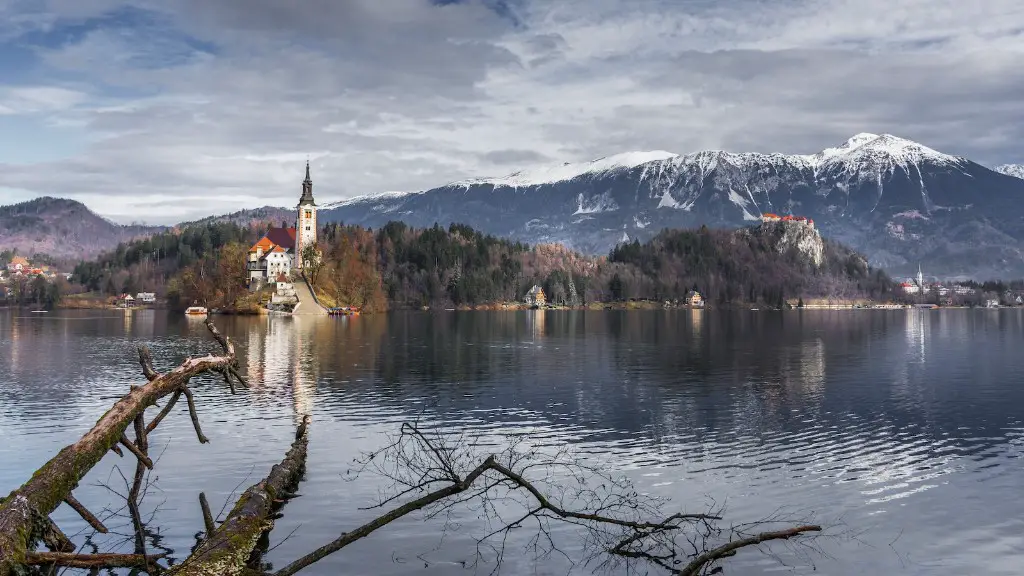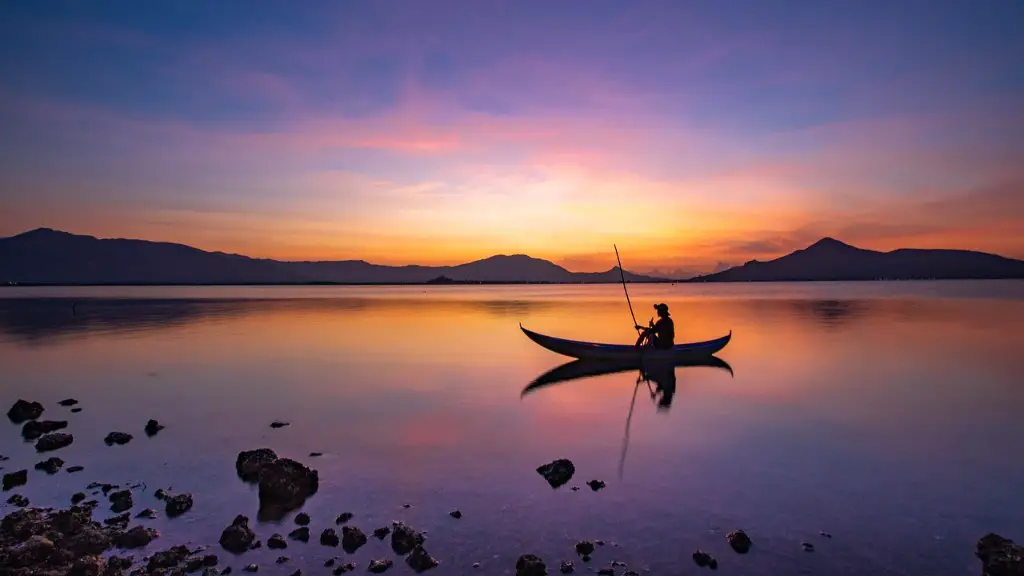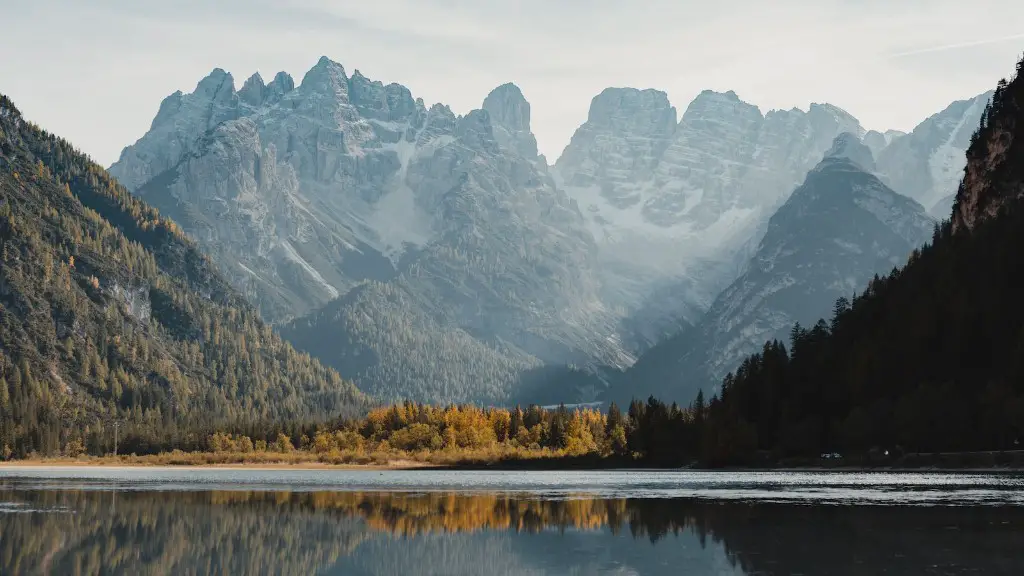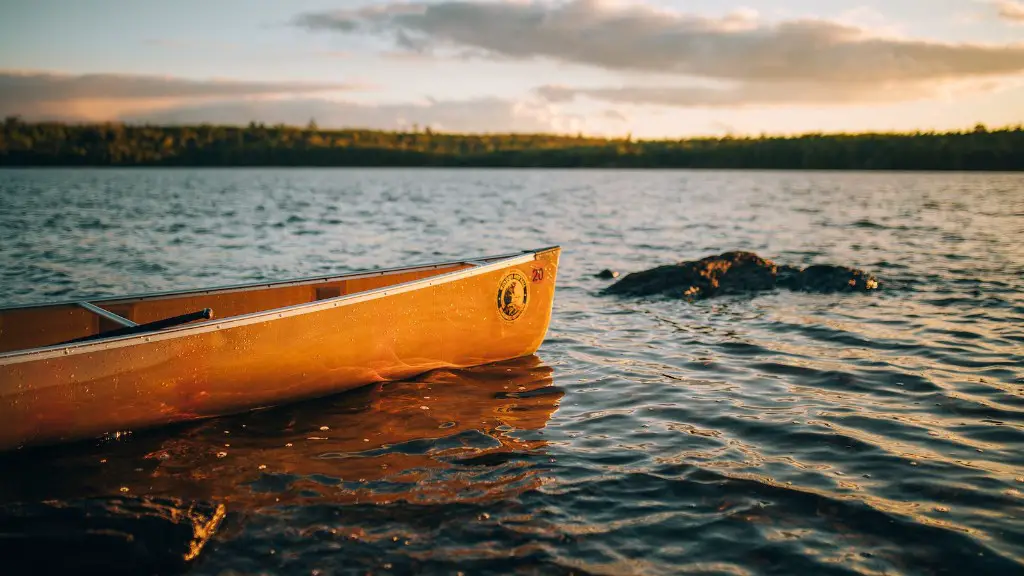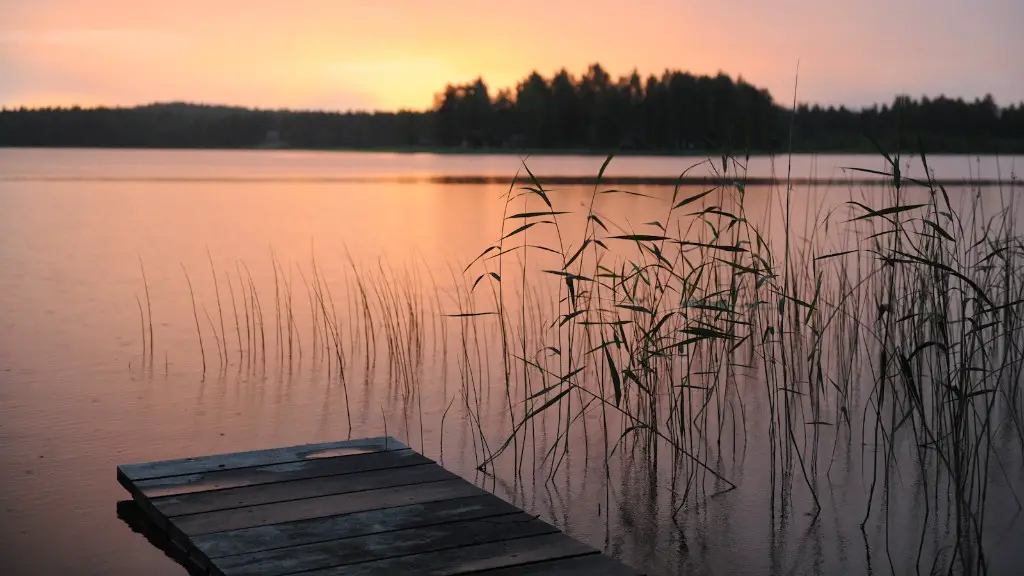Weather Patterns
Lake Michigan is one of the five Great Lakes that stretches across several states in the north-central United States. It is the third-largest of the lakes and is surrounded by several cities in Wisconsin, Illinois, Indiana, and Michigan. With a surface area of 22,404 square miles, the lake is filled with freshwater and is a popular destination for visitors looking for unique activities throughout the summer.
Due to its size, the lake experiences various weather patterns than the provinces it touches. It is located in a temperate region of the Midwest and experiences warm and humid climates in the summer that contrast with the bitter and sometimes damp winters. However, the lake itself can experience its own warm temperatures in the summer.
The lake’s temperature has a considerable impact on its natural habitats as well as the recreational activities it offers. Between late spring and early fall, the lake’s temperature increases gradually, ranging from mid-40 degrees Fahrenheit (°F) to late-70°F during the peak season. This wide temperature range also depends on various factors, such as air temperature and the location.
Effect of Air Temperature
The air temperature is the first and most significant influence on the lake temperatures. During the summer, the middle of the lake experiences higher temperatures since they become significantly heated by the sun. Meanwhile, the shallowest areas of the lake are more susceptible to the cold airflow, resulting in colder spots during the peak season.
When compared to that of rivers and streams, the lake’s temperature fluctuates considerably more. The range expands as much as 44°F during the summer season, offering a wide range of temperature that can make some areas more suitable for different activities than others.
The wind is another key factor in determining the lake temperature. While it is beneficial when the waves are just right for boating, the wind can lead to colder lake temperatures during the summer. It can be especially cold in certain areas of the lake where waves form and the wind further cools down the lake.
Location
The lake’s location affects the temperature as well. The outermost edges of the lake are clearly colder than the central parts because the sunlight does not reach them directly, rendering the middle part of the lake the warmest.
The lake is also surrounded by sand dunes and hills around its perimeter, affecting the temperature. These hills act as a windbreak and can shield certain areas of the lake from the cold air. Data has shown that regions with a more elevated geography, such as those near the dunes, tend to be a few degree warmer.
The cities scattered all around the lake also affect the temperature. The urban heat island effect causes the cities to be several degrees warmer than their rural counterparts and can cause the lake to be much warmer in certain areas.
Points of Interest
Various points of interest around the lake attract tourists year-round. Throughout the summer season, Lake Michigan is a popular getaway for vacationers looking for an escape from the city.
The sandy beaches scattered around the lake are the perfect spot for sunbathers, swimmers and beachcombers. The shallow waters provide comfortable temperatures for swimming and allows people to enjoy their way around the lake without too much of a chill.
The atmosphere around the lake is perfect for nature enthusiasts to explore. There are several walking, cycling and running trails around the parks that provide a great experience. The warm temperatures allow tourists to comfortably enjoy the activities the lake provides.
Water Temperature
The water temperature in the lake can reach up to 79°F during the warmest days of the summer. However this temperature still remains cold for some people, which requires safety precautions and the use of a wetsuit for those who plan to take a dip. Some areas of the lake are even colder than what the air temperature indicates and can be harsh for most visitors particularly during the summer season.
Warm-water areas instead, are typically located around harbors or the mouths of rivers. The areas provide water temperatures during summer months in the range of 70–75°F, making them more suitable for swimming and other activities.
Protection of the Lake
The lake remains a spot of interest for a variety of reasons. It is vital for the tourism industry not just in the Midwest, but in the rest of the US too. It is also home to some of the most diverse groups of fish, birds and plant species in the region. As such, it is important to protect the lake and its species from any potential exploitation.
Local and state governments are in charge of regulating recreational activities with the main goal of minimizing the impact on the species and habitats in the lake. This includes restrictions on fishing, boating, swimming to specific areas and certain months of the year. Regulations are in place to make sure people are aware of the dangers and mindful of their presence in the lake.
Beneficial Factors
Fortunately, there are some key benefits to the warm temperature of the lake. During the summer season, the warm temperatures render it an ideal spot for swimming and other water activities. It is also great for boat rides as it provides a nice time away as the temperature is usually cool.
The temperature also sustains the diverse flora and fauna of the lake. During the winter, the lake sustains a thick layer of ice that shelters the underneath layer from extreme weather and temperatures. The temperatures keep the lake’s water alive and make it the great spot of natural beauty it is.
Long-Term Changes in Temperatures
According to data provided by the same experts, the lake has seen a steady increase in its temperature over the past century. Over time, climate change has increased the air and water temperature of the lake, drastically affecting the species that inhabit the lake.
Certain studies suggest that the lake’s temperature could be much higher by 2090, which would significantly decrease the number of species present in it while damaging habitats. This could lead to severe implications not just in the US’ Midwest, but all around the world.
Conclusion
Lake Michigan is one of the most iconic landmarks in the US’ Midwest. During the summer season, it attracts hundreds of people looking for an escape away from the city’s hustle and bustle. The lake’s temperature largely depend on its various factors, such as the air temperature, the wind patterns and the elevation of certain areas.
The lake’s temperature can reach up to 79°F during the summer season, making it the perfect spot for activities such as swimming and boat rides. With the continued effects of climate change, the temperatures of the lake could intensify over the years, making it all the more important to protect the surrounding species and habitats in the lake.
